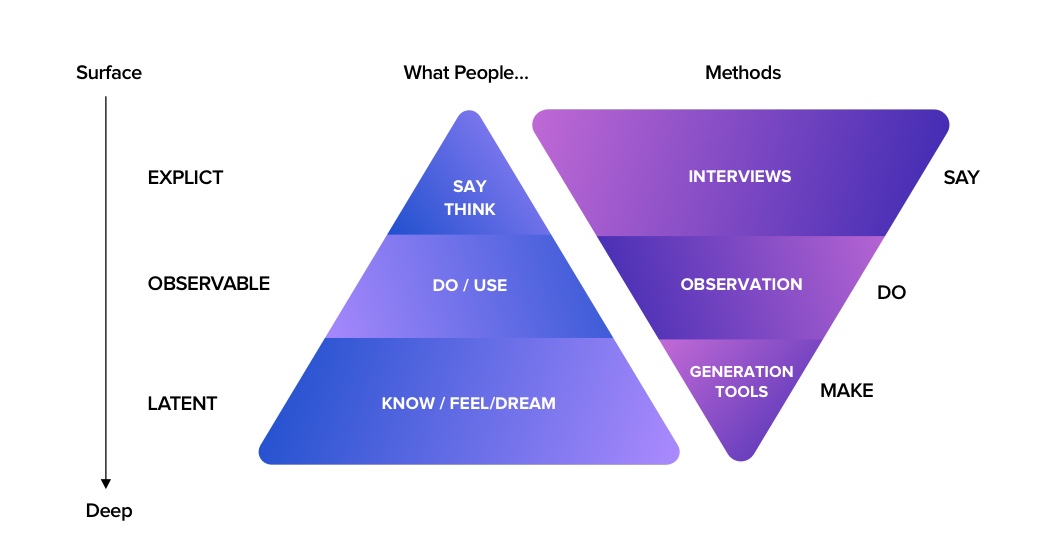“Customers are no longer buying products and services– they are buying experiences delivered via the products and services.”— Gregory Yankelovich
In today’s highly competitive digital landscape, there is no room for anything less than a seamless experience for your product or service. The better the products, the higher is the likelihood of selling. So bringing the best product to the market is a winning strategy, right?
Wrong.
While having an excellent product increases your chances of beating the competition, it doesn’t guarantee it. It is unfortunate to see great products wilting away.
By Satinder Singh
According to Harvard Business School professor Clayton Christensen, there are over 30,000 new products introduced every year, and 95 percent fail.
Having a failed product launch is a colossal waste of time and money, which demands a new plan and re-doing the entire product development life cycle.
Often, bad timing and unpredictable events are the root cause of a launch collapse: the uncontrollable factors. But the major causes of the downfall are controllable product design strategy mistakes. With a little bit of planning and research, they can be easily avoided.
Use this guide to stay aware and side-step the product strategy mistakes to have a successful product launch.
5 Key Product Strategy Mistakes
Being aware of the mistakes is step one in avoiding them. You can keep a lookout for them and devise contingencies to stay ahead of the game. There are a lot of mistakes you can make during the planning, manufacturing, and launching of a product. But here are the five most common ones which, if avoided, can lead to market capture.
1. Targeting the Wrong Segment of Persona
Customers drive the market. Businesses cater to their needs and deliver products based on their preference. But different demographics have different requirements. It is essential to have a clear understanding of your intended demographic and design your product around their demand.
“The main reason why products fail is because they don’t meet customers’ needs in a way that is better than other alternatives.”– Dan Olsen
Target audiences must be defined during the initial stages of the planning process. This information must be communicated throughout each phase of production. If they aren’t specified early on, your team may start building a product that doesn’t align with the requirements of the intended customers. The miscommunication is counter-productive and will put you behind schedule.
2. Choosing the Inappropriate Development Method
For the development of a product, a well-defined production process must be designed. This helps keep your staff coordinated with you and each other. A well-synchronized workforce is highly efficient. Two major development models are proven to work in the market today.
- The waterfall model is a sequential development technology. Each step comes after the next, and no new phase is triggered before the completion of the previous. The waterfall model is controlled, but due to the incrementing nature, it may be time-consuming.
- The agile model, on the other hand, is quite chaotic but time-savvy. In this model, each task can be performed simultaneously, and the integration of the tasks is done at the end. The agile development model also encourages customer feedback throughout each phase of production. Continuous integration and continuous deployment is a mechanism similar to the agile model, where the product is regularly reviewed, and small changes are made. DevOps solutions can be integrated with the development models to reduce lead time.
3. Not Investing Enough in Market and User Research
Products must match customer demands. The adequate market analysis must be done to observe customer requirements. You may find that your vision of a product is different from the market interest. A broad perspective of the requirements must be set in stone before the initiation of the production process. But markets shift due to various events. For this, you need to keep up to date with the market trends and have credible prediction algorithms.
It is important to figure out the priorities of the target customers to understand where to invest your valuable resources. If a customer has a tilt towards cheap yet decent products, your aim might change to improve the feel of the product at a low price. But, if they are keener towards a luxurious status item, you get the liberty to do the whole nine yards, and still, mark up the price point after that.
However, to find out the buyers’ motivation, you will need to figure out what your target audience most cares about.

4. Unable to Understand the Business and Functional Requirements
When developing a product, we need to define what it needs to ‘do clearly’. This can be quite confusing to some since your product may offer various features. The business and functional requirements of the product/service must be conveyed throughout the development life cycle.
- Business requirements are the features that it must have, or the things that it must be able to do for the product to be classified as completed. For example, a face detection app may have a user registration feature, but its main aim is to be able to detect faces.
- Functional requirements are those that need to be achieved to accomplish the business requirements. For the above face detection example, the functional requirements are a camera, a display module and a detection algorithm.
The business and functional requirements must be distinguished from the other features to create a transparent vision of the end product.
5. No Place of Cross-Functional Team of Stakeholders
The stakeholders of your company are anyone that is integral for its upkeep. Stakeholders are divided into internal and external stakeholders. The internal stakeholders of your company are those within the firm (employees, investors, board members), while the external ones are those outside of the firm but are required for the operation of it (customers, vendors).
All stakeholders’ interests must align with each other. Conflicts within the supply chain can have destructive effects on the business.
Good Product Strategy Examples
With a solid business model and a mistake-free production plan, you are almost sure to see the success of your product. But you may not believe us, so here are some real-life product strategy examples.
1. ParcelKiosk
ParcelKiosk is a delivery company that required a web-based solution for a parcel delivery app. With all services shifting to online platforms, ParcelKiosk predicted the change and leaped in the right direction.
After the market research, they, together with Net Solutions decided that the parcel measurements and selection process were time-consuming and sub-par and changed their business requirements accordingly. Now, they knew what to expect of the application so, they moved on to their intended customers.
ParcelKiosk is a bridge that connects suppliers to their customers, so these two entities would be the benefactors of the application. After freezing the initial requirements, they were ready to move on to the building. Here they described a fluid development model to use in the production process. Without any conflicts of interest, their application was ready to go.
2. SOAQ
Before developing this application with Net Solutions, SOAQ noticed the lack of ‘Video-On-Demand’ platforms for inter-enterprise communication in the market. SOAQ seized this opportunity to make this happen. Their clients would be organizations that needed videos distributed within the company.
They then came up with their business requirements, involving ‘unique permissions’ to be able to control the access of these videos. Each member and video would be assigned authentication rights, if members had the proper rights, they would be able to play the video. Agile and Scrum methodologies were used in the development lifecycle. This allowed them to create the minimum viable product (MVP) quickly and distribute it to their clients for testing and feedback for further development. Due to the streamlined models and proper market research, no stakeholder conflict occurred.
Deployment
A product launch can be quite challenging even with exquisite digital tools and a perfect model. But a weak product strategy framework can push you in the category of that 95 % of the products, which fail. To build robust digital products that transform your business, you need a seamless product strategy and sound systems, resulting in minimized risk and amplified business value.













